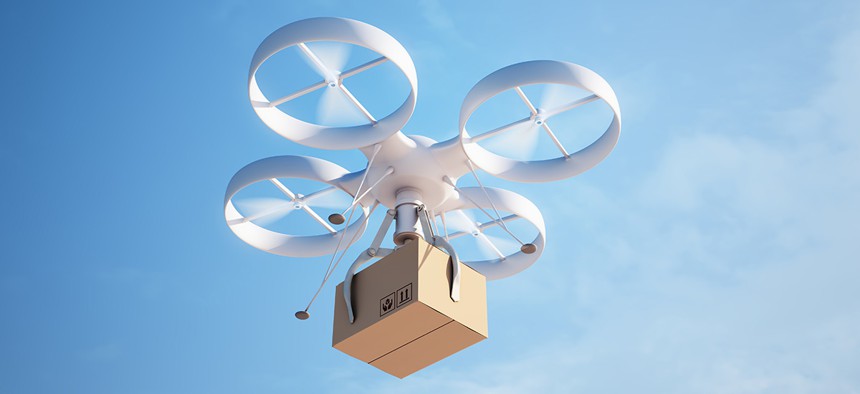Poll: Americans Want Drone Delivery - But Not Yet

Mopic/Shutterstock.com
Young, urban citizens more interested in the technology, Postal Service IG survey finds.
Americans are intrigued by and open to the possibility of the U.S. Postal Service using drones to deliver packages, according to a new survey from the agency’s inspector general, but do not appear ready for a deployment of the technology.
In a nationwide survey, 44 percent of respondents told the USPS IG they like the idea of drone delivery, while 34 percent said they do not like the idea. An additional 23 percent did not have an opinion either way.
While Americans are open to the concept of drone delivery, it strikes them as more of a down-the-road concept. Respondents expressing positive views toward the Postal Service would drop 26 percent if the agency began using unmanned aerial vehicles to deliver packages today. Nearly nine in 10 respondents had at least one issue with drone delivery, and just one-third said the practice would be “safe.”
Nearly half of Americans fear drone malfunction when delivering on behalf of USPS, according to the survey, and an additional 16 percent are concerned about package theft.
Some groups are much more prepared for drone delivery than others; by a 45 percent margin, millennials are overwhelmingly supportive of the strategy. Just one-quarter of Baby Boomers, however, like the idea of drone delivery. Males, urban residents and regular USPS customers were all significantly more likely to support the unmanned drop-offs.
The IG credited Amazon founder Jeff Bezos with bringing the idea of drone-based package delivery into the public consciousness, saying he first raised the prospect in 2013. Three-quarters of Americans view drone delivery as likely to occur within the next five years, the IG found. The potential for one-hour delivery piqued their interest in the technology the most, followed by ability to deliver in emergency situations.
While the IG said USPS drone adoption is still a “few years” off, it implored the agency to assess the feasibility and other implications of its implementation.
“Drones have the potential to offer substantial cost savings to deliverers while also drastically improving consumers’ e-commerce experience by offering extraordinarily fast delivery at any time of day to wherever a person is physically located—not just their home address,” the auditors wrote. “At the same time, filling the sky with merchandise-laden robots is a proposition that raises alarm for many citizens, including those who anticipate never benefiting from the service firsthand.”
Kevin McAdams, the Postal Service’s vice president for delivery operations, said management was “not entirely surprised” by the survey’s findings, particularly that younger and more urban Americans held the most interest in drone usage. He said USPS is “keenly interested in exploring the potential for this delivery method,” but added the technology must make USPS more efficient, maintain public safety and exist within a regulatory framework.
The inspector general polled 1,465 adult Americans in all 50 states and Washington, D.C., in June of 2016. The poll had a margin of error of 2.8 percent and over-sampled rural citizens.






